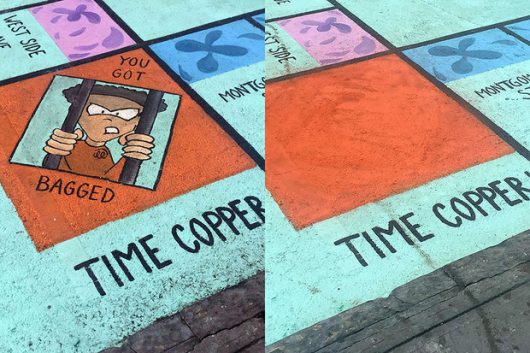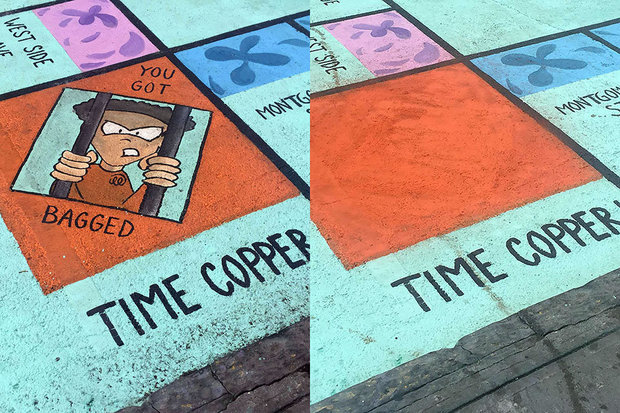|
 Credit: Jersey Journal UPDATE 7/25/2016: Jersey City authorities today moved to paint over the entirety of the Monopoly mural. The decision affirms the need for Jersey City to implement a public art policy, a point stressed in NCAC's letter last week to Jersey City Mayor Stephen Fulop. The reasons why the mural was painted over is unclear, however it's evident City authorities mishandled the complaints levelled at the artwork by responding immediately with censorship. NCAC's letter urges Jersey City to come up with a formal selection and review process for future public art commissions. Read the full letter to Mayor Fulop at the bottom of this post. Original post: Late last week, Jersey City authorities painted over a portion of a public artwork after some local residents complained about its message. The action raises serious First Amendment concerns. The public artwork, a giant monopoly board mural featuring Jersey City locations, sparked public outcry because the "Go to Jail" spot was illustrated with a man of color behind the bars. A group of residents, including local Assemblywoman Angela McKnight, argued that the image reinforced negative stereotypes of African-Americans and asked for its removal. The artist, Mr. Abillity a.k.a Gary Wynans said the prisoner was a self-portrait. Mr. Wynans is of Puerto Rican and Italian descent. Explaining why he chose to paint himself behind bars, he recalls his arrest in 2013 for graffiti offences. "I'm an artist, so telling my story is what I do, " he said, going on to describe the sense of triumph he felt over his eventual commission from the city to paint a piece of public art: "To have somebody go from being arrested for his art to share it on a large scale with the people of the city he loves is the happy ending to the entire story." But this was not quite a happy ending: New Jersey authorities yielded to resident pressure and the man behind bars is now a block of orange paint. The decision is extremely troubling. Government officials are barred from suppressing artwork – or requesting modifications to its content – based on its viewpoint or message as opposed to viewpoint-neutral concerns such as safety. Given that the city's decision was based solely on the concerns of residents who disliked the message of the work, it violates both Mr. Wynans' constitutional right to freedom of expression and the public's right to access a broad range of public artwork. The artist's intentions behind the monopoly mural differ from the interpretation of protesting residents. Which often happens: art is open to multiple interpretations and differences of opinion in response to an artwork are frequent. However, there is a serious problem when one interpretation is privileged by those in power and becomes the reason to censor public artwork. Stay tuned for NCAC's letter to Jersey City. |
Read the full letter below; click here for a full screen view.


